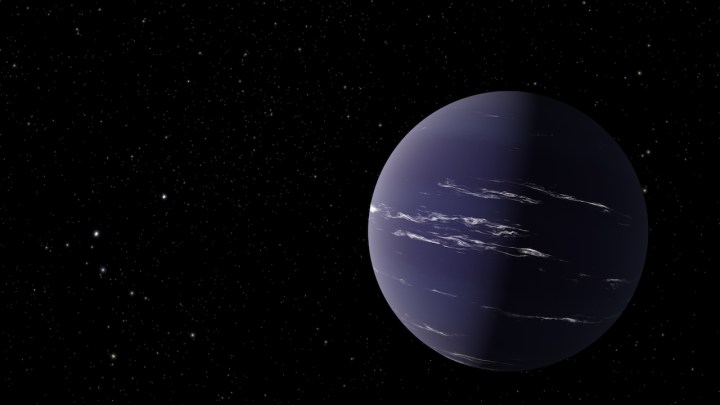
Discovering planets beyond our solar system is one thing — we’ve discovered over 4,000 exoplanets so far — but discovering if they might be habitable or if they might have an atmosphere is another. That’s why it’s exciting when researchers discover an exoplanet with a substantial atmosphere, as a group from NASA’s Jet Propulsion Laboratory and The University of New Mexico did recently.
The planet, TOI-1231 b, is a bit smaller than Neptune and orbits a common type of star called a red dwarf. Using tools including the Transiting Exoplanet Survey Satellite (TESS) and the Planet Finder Spectrograph (PFS) at Las Campanas Observatory in Chile, the researchers were able to infer information about the planet’s size and characteristics.
“Working with a group of excellent astronomers spread across the globe, we were able to assemble the data necessary to characterize the host star and measure both the radius and mass of the planet,” said lead author Jennifer Burt of NASA’s Jet Propulsion Laboratory. “Those values, in turn, allowed us to calculate the planet’s bulk density and hypothesize about what the planet is made out of. TOI-1231 b is pretty similar in size and density to Neptune, so we think it has a similarly large, gaseous atmosphere.”
One interesting feature about this planet is that it is relatively cool, with a temperature of 330 Kelvin (140 degrees Fahrenheit), which means that it could have clouds of water in its atmosphere. “TOI-1231 b is one of the only other planets we know of in a similar size and temperature range, so future observations of this new planet will let us determine just how common (or rare) it is for water clouds to form around these temperate worlds,” said Burt.
The researchers infer that there is an atmosphere there due to the planet’s low density. “The low density of TOI-1231b indicates that it is surrounded by a substantial atmosphere rather than being a rocky planet. But the composition and extent of this atmosphere are unknown!” said fellow author Diana Dragomir. “TOI-1231 b could have a large hydrogen or hydrogen-helium atmosphere, or a denser water vapor atmosphere.”
This also means that the planet could have a quirky feature: A tail. According to NASA, due to the speed at which the star system is moving away from Earth, it might be possible to see hydrogen being lost from the planet’s atmosphere and forming a tail in space that could be detected by instruments like Hubble.
In addition, this planet provides a useful point of reference for understanding planets in our own solar system. Most planets discovered using current tools tend to be much hotter, so this cool planet is a handy contrast.
“One of the most intriguing results of the last two decades of exoplanet science is that, thus far, none of the new planetary systems we’ve discovered look anything like our own solar system,” said Burt. “They’re full of planets between the size of Earth and Neptune on orbits much shorter than Mercury’s, so we don’t have any local examples to compare them to. This new planet we’ve discovered is still weird — but it’s one step closer to being somewhat like our neighborhood planets. Compared to most transiting planets detected thus far, which often have scorching temperatures in the many hundreds or thousands of degrees, TOI-1231 b is positively frigid.”
The findings will be published in The Astronomical Journal.
Editors' Recommendations
- See planets being born in new images from the Very Large Telescope
- NASA launches PACE satellite to observe Earth’s oceans and atmosphere
- Astronomers spot rare star system with six planets in geometric formation
- Map of Mars shows the location of ice beneath the planet’s surface
- Thursday’s spacewalk at the ISS has just been postponed




